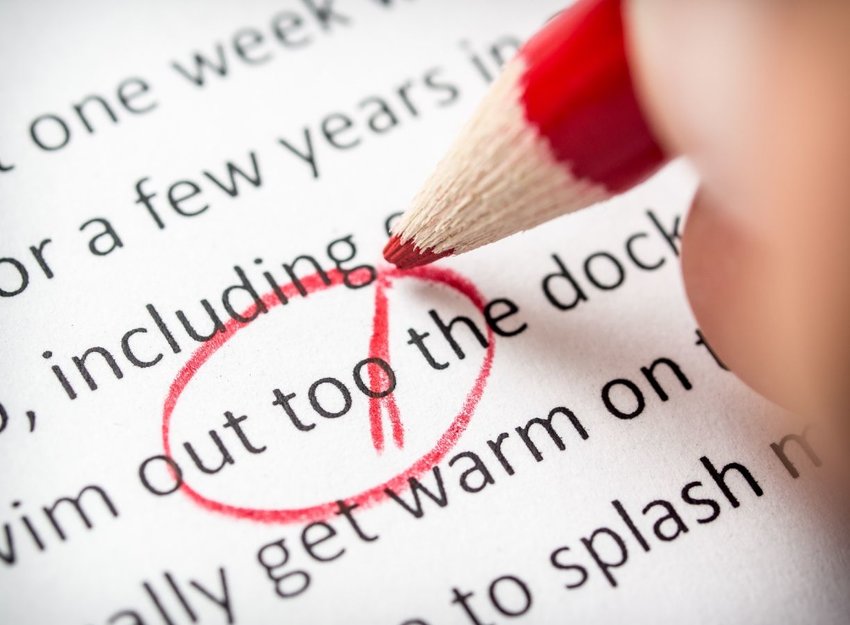Not everyone is a professional writer — but that’s no excuse for sloppy grammar, spelling, or punctuation. Take the time to look twice at even the most casual of messages to elevate your professionalism with colleagues, friends, and your broader network. Here are some common mistakes to double-check before you hit send, submit, or print.
Spelling Names
When referring to any type of proper name, from the Taj Mahal to Justin Bieber, make sure of the proper name spelling. Few things can raise the hackles of a potential business connection more than getting their name wrong. Even if you think you're sure, double-check, particularly with common names that can have multiple spellings, such as Britney/Brittany/Brittney, or Clark/Clarke. If it's a name you've only heard out loud, such as if you're sending an email to a connection you met at a conference, it's perfectly polite to ask for the correct spelling.
Using Oxford Commas
Whether or not an Oxford comma is required is still hotly debated by writers and grammarians. As a refresher, Oxford commas are used after the second to last word in a list, before the "and." For example, “Jillian had bacon, orange juice, and toast for breakfast.” The Oxford comma is the one after "juice." Unless writing for a publication with a specific rule for commas, it doesn’t matter which way you decide to do it — just pick your style and stick to it for every occurrence.
Check Your Homophones
Homophones are words that sound alike but have different spellings and meanings. These are some of the most commonly misused words.
- "There" — Typically about locations. “She’s going over there this afternoon.”
- "Their" — This determiner indicates possession. “The Smiths invited her to dinner at their house.”
- "They’re" — A contraction of the words "they are." “They’re planning to sell their house soon.”
Similarly, with “to,” there are two (not including the number two).
- "To" — A preposition often used to describe directions. “He went to the grocery store.”
- "Too" — An adverb that means "also" or "very." “There were too many people in line.”
Keep Consistent
Outside of your grade-school English teacher, people are pretty flexible about little style choices, as long as you remain consistent.
- Bullet lists: Are there dots in one place and dashes in another?
- Spaces: Are there one or two spaces after a period? What about on either side of a slash or dash?
- Title case vs. sentence case: If using section headings, do they always use the same case?
Stay Trim and Tidy
Short, efficient sentences are easier to read. To get really concise, try the Hemingway Editor, a free online editor that will make your prose as linguistically efficient as the renowned author's.
A few pro tips for trimming down the word count:
- “That” is a word that you do not need. Take out the second “that” in the previous sentence, and it still makes perfect sense.
- No need to use multiple syllables or extra words when one will do. "Utilize" → "Use." "In order to" → "To."
- Be spartan with your adverbs and adjectives. Too many are distracting.
Get Active and Positive
Finally, write in the active voice. Passive voice results in long, unwieldy sentences littered with too many prepositional phrases. For example:
- Passive: She was struck with fear by the shadow moving outside her window.
- Active: The shadow outside struck her with fear.
No matter the context or reason for the writing, a positive tone can change the entire dynamic. Look for negative words and flip them to positives wherever possible.
- Negative: If you have any questions, don’t hesitate to ask.
- Positive: If you have any questions, please ask.

